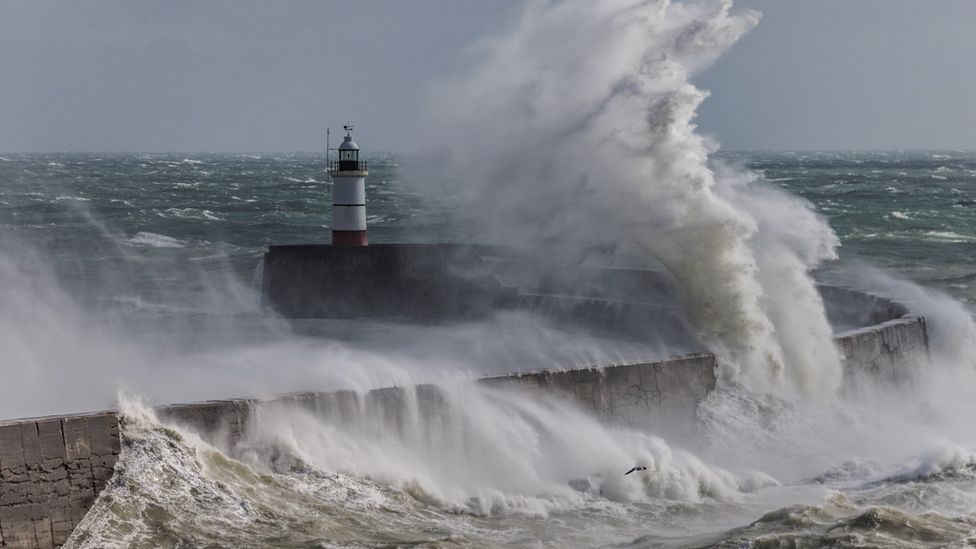Storm Babet: What do you need to know?
- Published

Storm Babet has been named by the Met Office for severe weather impacts expected from Wednesday to Saturday.
The second named storm of the autumn will bring heavy rain and strong winds to the UK.
Several early warnings have been issued, including a high-impact amber warning for eastern Scotland
Flooding and damage from strong winds are possible. There are still uncertainties in the forecast details so the advice is to stay up to date.
Storm Babet, pronounced Bah-beht, will move in from the south-west on Wednesday, and will be joined by a second, developing low-pressure system, with impacts continuing into Saturday.
Ciarán, Kathleen and Vincent are among the names for storms that may hit the UK and Ireland in 2023-24.
Satellite image of Storm Babet to the southwest, and a developing low-pressure system in the Atlantic
Heavy rain
While many parts of the UK will experience heavy rain at times, the biggest concern is for central and eastern Scotland.
It has recently been very wet across Scotland so the ground is already very saturated.
With heavy and prolonged rain from Wednesday through to Saturday, rainfall accumulations of 70 to 100mm are expected but over upland areas, it could be as much as 150-200mm.
The Met Office has already issued an amber severe weather warning with focus on Angus and south-east Grampian where flooding is a concern.
The Scottish Environment Protection Agency is also monitoring the situation and has also issued early warnings in central Scotland for flooding concerns.
Storm Babet will move in from the Atlantic on Wednesday through to the end of the week
Strong winds
Winds will strengthen, likely peaking on Thursday and early Friday.
Northern Scotland may experience the highest gusts of wind of up to 70mph in places but widely 40-50mph.
Impacts from the these gusts could be exacerbated by the fact the wind direction will be south-easterly. This is a less common wind direction for storms hitting the UK.
The prevailing wind direction is a south-westerly so nature and infrastructure is built with this in mind. As a result, trees and some structures are more vulnerable in strong south-easterly winds.
This is part of the reason why Storm Arwen in 2021 felled so many trees and brought a lot of disruption.
Forecast certainty
While weather computer modelling is highlighting the potential for severe weather, the Met Office will hope that naming Storm Babet early with advanced warnings will mean communities and officials are prepared.
However, as the severe weather will be delivered by two developing systems, there are still uncertainties in the detail of the forecast.
Forecasters will be continually monitoring new information and making finer adjustments to these details and warnings as necessary.
Find out the weather forecast for your area, with an hourly breakdown and a 14-day lookahead, by downloading the BBC Weather app: Apple, external - Android, external - Amazon , external
The BBC Weather app is only available to download in the UK.